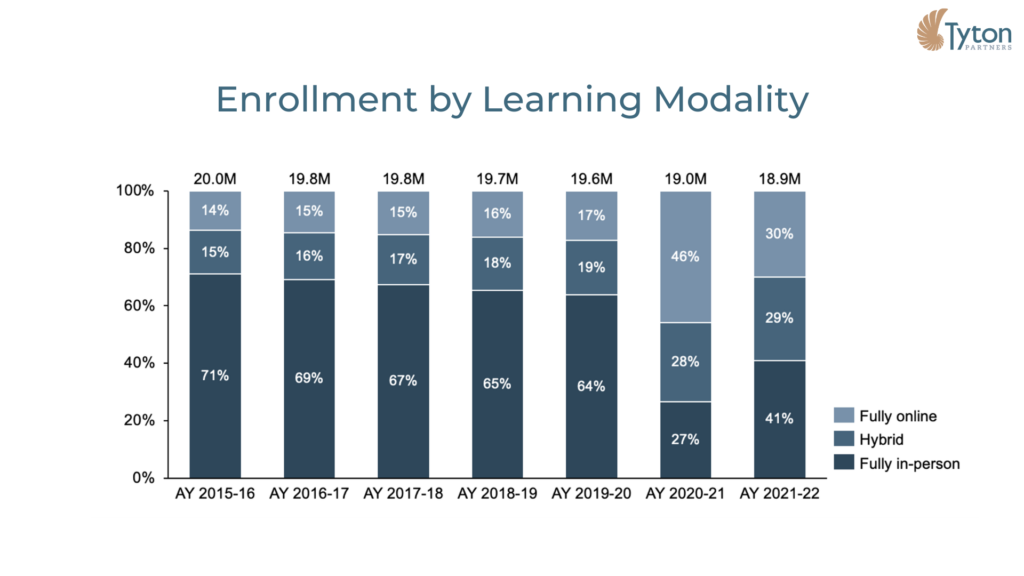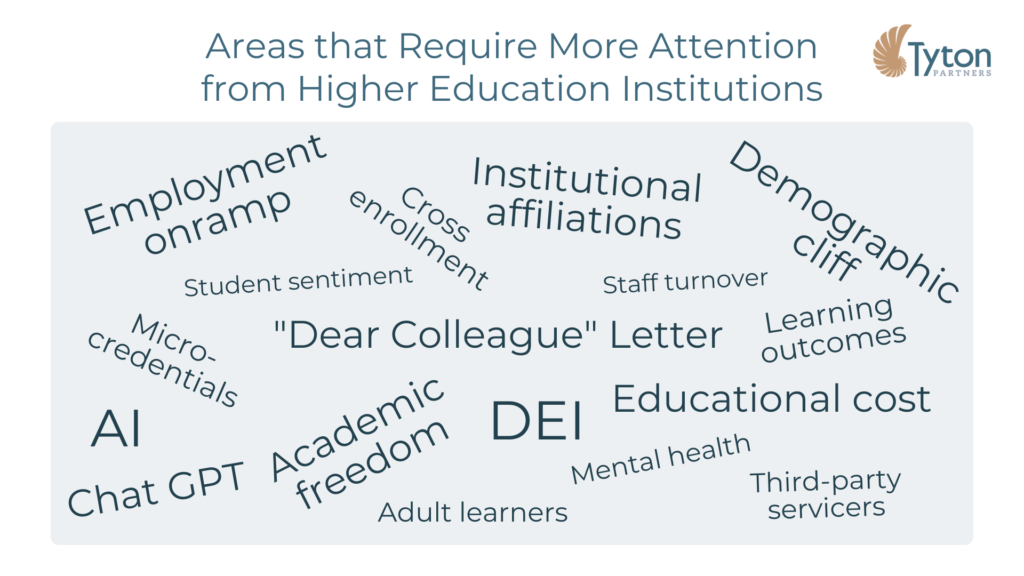Behind the scenes of Otterbein University’s partnership with Antioch University
June 10, 2025 BlogWe’re excited to launch Tyton Partners’ new interview series, Five for the Future: Spotlight on Transformative Institutional Partnerships….
In the U.S., the pandemic accelerated a movement toward hybrid and online learning in permanent ways, including for the “traditional-aged student”. Whereas 2015-2022 saw 2% growth of fully online enrollment, we’ve seen sustained increases in the movement of students to hybrid and online learning modes, post-pandemic.

We expect this trend to continue. Preliminary results from our 2023 Time for Class survey of currently enrolled students (to be released this spring) show that a minority of students prefer taking courses face-to-face, with a preference for hybrid, blended or fully online modalities being preferred by the majority of students currently enrolled in bachelors and associate-level programs.
This is just one of many sea changes that requires strategic attention from institutions and their EdTech counterparts to develop an institutionally relevant and appropriate online strategy. And of course, this is made more difficult by several factors at play in today’s higher education institutions, including:
Now, review the juxtaposition of these complexities against dimensions of institutional change:
These dynamics produce a complicated chess board on which our institutional leaders must decipher strategies to care for all constituents. And unfortunately, many leaders feel like they are navigating a pathway forward without a playbook or compass.

Whether working with trusted colleagues or an assigned in-house team, ensure that this effort provides for an expansive view across the institution and the learner experience, engage in a review of how well you are organized and are delivering results. Empower your group to challenge any and all sacred cows when unpacking the reality of your organization.
We are big believers in building a clear-eyed view of the student journey, identifying points of friction, and comparing current state to optimal state. This is a critical element to devising labor and workflow adjustments and has proven successful with our clients.
The most successful efforts remove encumbrances and allow for open, free-thinking and sharing of ideas. Start at the most macro-level exploring the vision ahead for your organization. Work through your own thought-cloud of opportunities and priorities prior to overlaying any constraints; think limitlessly. There will be plenty of time to pare back later.
We use this approach to help universities assess, align, and expand their program portfolio. We also support opening the aperture to include new programs and micro-credentials as well as tackling the difficult task of understanding differentiation and value creation by program as compared to local, regional, and national competitive sets.
Beyond these two steps (but prior to building an actual plan), consider what external opportunities exist to help with the work ahead. Some may be low/no-cost parties near your organization, including alumni, community, and/or advisory councils. Others may include high-value partners who bring vertical expertise and sophisticated capabilities to poise your organization well for the future.
We help institutions accelerate their success here by:
With all of this in mind, remember that the simplest and most important step is often the most overlooked: listen and communicate, often and effectively, to all constituents in and around your institution or organization. Smart ideas are often within arm’s length and we are here to help you actualize them!